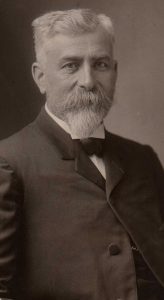We hear a great deal about authenticity, expertise, and certificates of authenticity. All are important things to consider when looking at a work of art … especially if you plan on buying it. One troubling aspect of the art world is that there are people who believe they know it all and feel that they do not need the opinion of a noted expert. On the flip side, there are many who will seek out the opinion of an individual the art world deems the expert on a specific artist --- they want to check all the boxes (do their due diligence).
So here is a fun story about one painting that has circled the globe over the past 10 years. In 2009, a large painting of a Milkmaid, cataloged as a Julien Dupré, was offered at a sale in Upstate New York. I saw a poor-quality image and asked for higher-resolution photos. The auction room informed me that the images they had were the best they could offer and if we bought the painting, and it turned out not to be right, we could return it. We proceeded to buy the painting (paid $27,600) and had it shipped to the gallery. Once we opened the package, it was immediately obvious that the painting was not by Dupré. It took a few weeks, but we did get our money back. Soon after, I began to wonder what would happen to that painting? Would it resurface at another sale? Would that saleroom contact us before selling the work? It did not take too long to find out.
On November 10, 2010, there was a sale in New York City and one of the featured paintings was the Dupré. It carried an estimate of $20-30K and luckily failed to sell.
October 10, 2011 - the painting was offered at a sale in Belgium with an €8-12K estimate and sold for €7K.
January 16, 2012 - the painting came back up for sale in Belgium. This time it has an estimate of €5-7K and sells for €4K.
Between 2012 and the end of 2016 the piece appeared at two art and antique shows that we know of – that is only because we were exhibiting at those shows. Both times, the painting was removed from the floor before the opening.
August 27, 2016 – after a 3 ½ year break from the auction market, the painting shows up at a sale in Maine with a $15-$20K estimate and sold for $13K.
September 23, 2017 – the work appears at a sale in Maryland with a $7-9K estimate and sells for $10K.
September 26, 2018 – just one year later the painting is offered at a sale in London with a £10 – 15K estimate and sells for £8K.
I do hope someone is racking up the frequent flyer points on this one!
Sadly, this story illustrates the lack of expertise some people/firms have and how little some of them care. If there is a well-respected expert for an artist, the trade (dealers, galleries, auction rooms, etc.) should contact them before offering a work for sale. Having a work properly authenticated will not only help clean up the market but protect potential buyers; in addition, it can help prevent an ugly and costly lawsuit from an unhappy buyer.
The final thing to remember is that when one of these fake paintings are sold at auction, the result is entered into several art databases. In turn, this will skew the overall numbers for those artists. Julien Dupré now has six additional false data points (I say additional because I know there are many others). How many other artists face the same issue? A lot!

